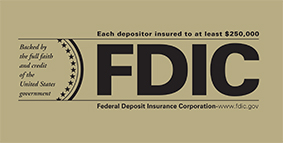
What Does Deposit Insurance Cover?
FDIC deposit insurance protects money you hold at an FDIC-insured bank in traditional deposit accounts like:
- Checking Accounts,
- Savings Accounts,
- Money Market Deposit Accounts (MMDAs), and
- Certificates of Deposit (CDs).
Coverage is automatic when you open one of these types of accounts at an FDIC-insured bank. Learn more about what’s covered:
Are My Accounts Covered?
Is My Bank Insured?
How Much of My Money is Insured? Check our Electronic Deposit Insurance Calculator

What Financial Products are Not Covered?
The FDIC only insures your money if it is in a deposit account at an FDIC-insured bank. Banks offer some financial products and services that are not deposits, and the FDIC does not insure them. These include:
- Mutual Funds
- Annuities
- Life Insurance Policies
- Stocks and Bonds
- Crypto Assets
- Municipal Securities
- Safe Deposit Contents
How Do You Get An Insured Account?
Large and small banks across the country offer deposit accounts backed by FDIC deposit insurance. Coverage is automatic when you open one of these types of accounts at an FDIC-insured bank. If you are in one of the 5.9 million U.S. households without a bank account, and you are looking to open an account, FDIC has resources to help get you started.

Consumer FAQ
Our Frequently Asked Questions page provides details on deposit insurance coverage, FDIC actions in the event of a bank failure, finding an insured bank, and more.

Information for Bankers
The FDIC has created useful resources to help bankers provide depositors with accurate information on deposit insurance.
Financial Institutions Employee’s Guide to Deposit Insurance
Information on Deposit Insurance Assessments
Need Help?
Contact the FDIC
Call us at 1-877-275-3342 (1-877-ASK-FDIC) to determine your deposit insurance coverage or ask any other specific deposit insurance questions.
Visit the FDIC Information and Support Center to submit a request, share a complaint, check on the status of a complaint or inquiry, or securely exchange documents with the FDIC.
Youtube Analytics tag







